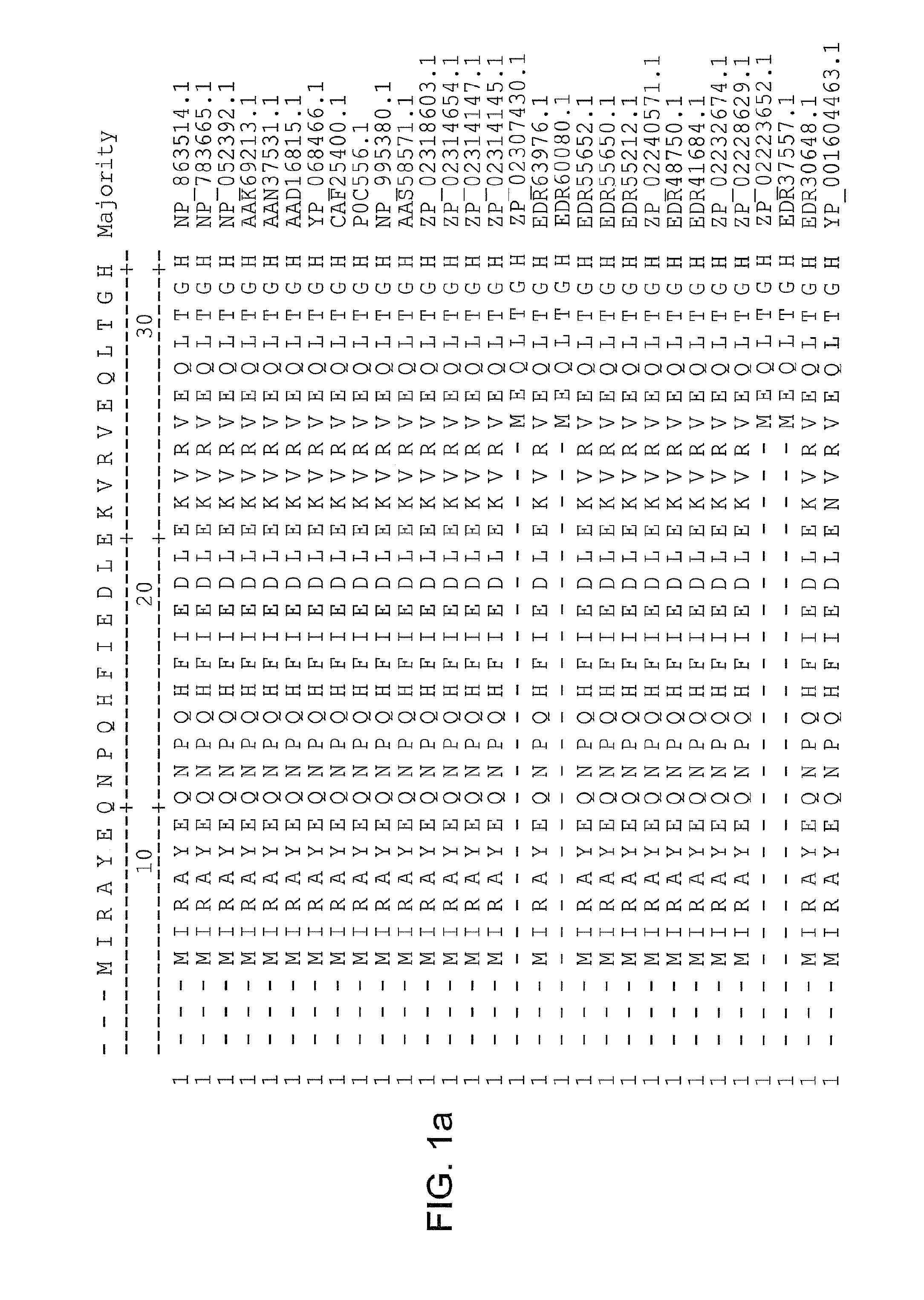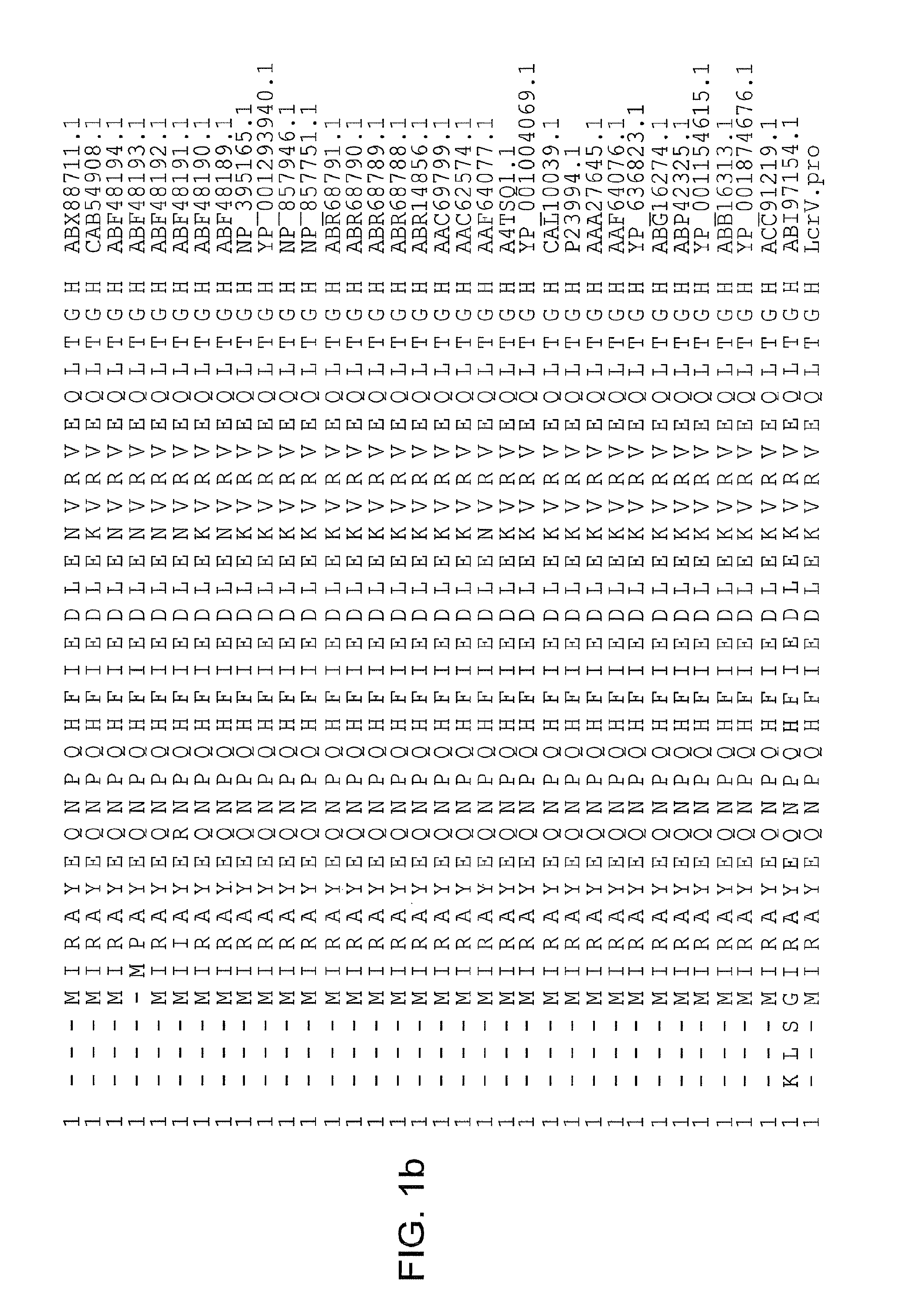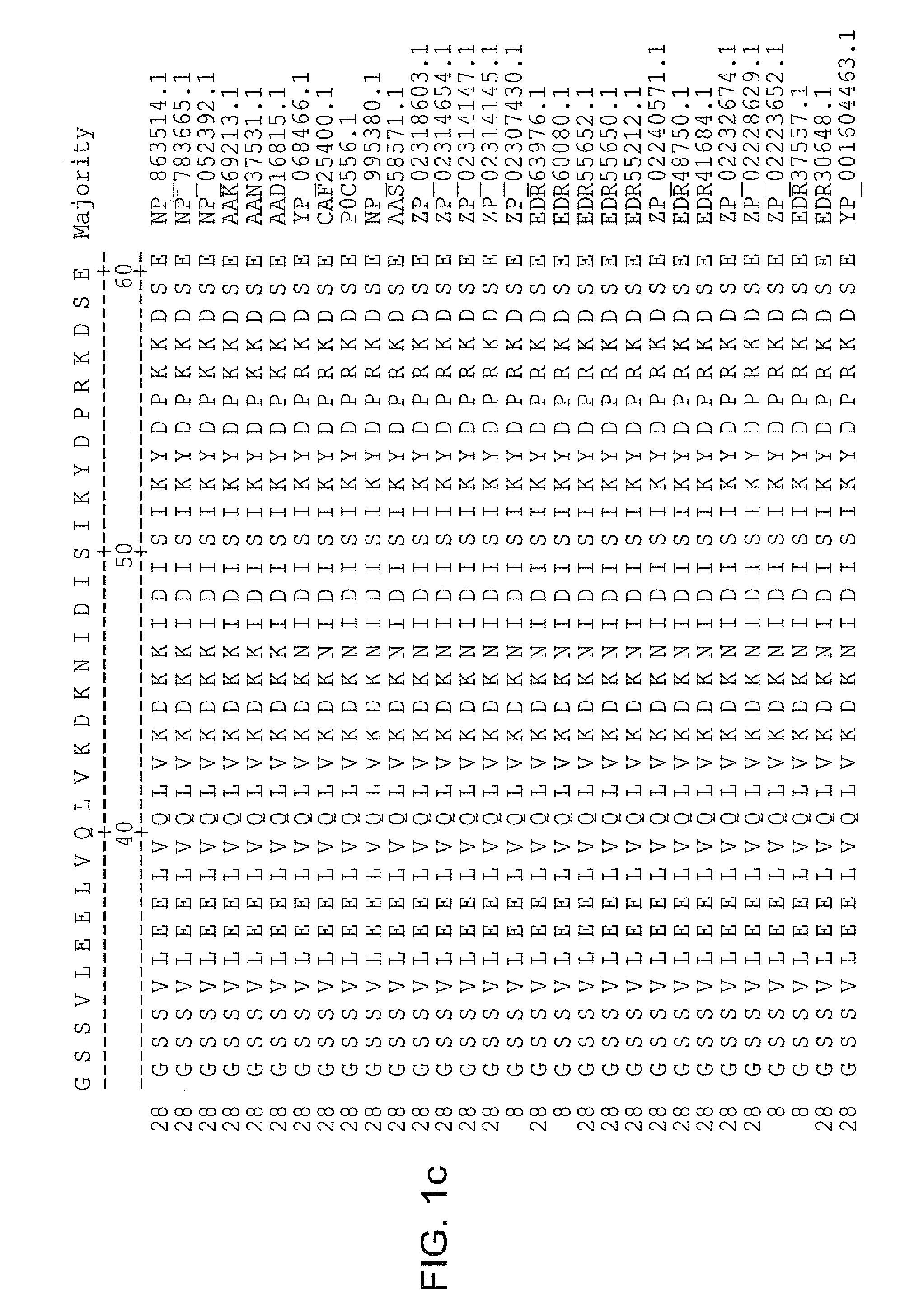Yersinia pestis antigens, vaccine compositions, and related methods
a technology of yersinia pestis and antigens, applied in the field of yersinia pestis antigens, vaccine compositions, and related methods, can solve the problems of no safe and effective vaccine against i>y. pestis, millions of deaths,
- Summary
- Abstract
- Description
- Claims
- Application Information
AI Technical Summary
Benefits of technology
Problems solved by technology
Method used
Image
Examples
example 1
A Plant-Produced Plague Vaccine Candidate Confers Protection to Monkeys
[0279]Y. pestis proteins F1 and LcrV were independently fused to an engineered version of the thermostable enzyme lichenase (LicKM) from Clostridium thermocellum (Musiychuk et al., 2007, Influenza Other Respir. Viruses, 1:19-25; incorporated herein by reference). Fusions were produced in Nicotiana benthamiana and evaluated in Cynomolgus Macaques for immunogenicity and protective efficacy. When administered to monkeys, a mixture of the LicKM fusions to F1 and LcrV was highly immunogenic and protective.
Materials and Methods
[0280]Engineering, Expression and Purification of Y. pestis Antigens
[0281]The LicKM fusion system for producing antigens in plants is described (Musiychuk et al., 2007, Influenza Other Respir. Viruses, 1:19-25; incorporated herein by reference). Briefly, sequence encoding full-length mature Y. pestis F1 and LcrV were separately cloned into LicKM (GenBank accession number DQ776900) as in-frame fus...
example 2
A Plant-Produced Plague Double Fusion Vaccine Candidate Stimulates High Titers of Antigen-Specific IgG and Confers Protection to Mammals
[0295]Y. pestis proteins F1 and LcrV were both fused to an engineered version of the thermostable enzyme lichenase (LicKM) from Clostridium thermocellum (Musiychuk et al., 2007, Influenza Other Respir. Viruses, 1:19-25; incorporated herein by reference). LcrV protein was fused into the loop region of LicKM, and F1 protein was fused to the C-terminus of LicKM. Fusions were produced in Nicotiana benthamiana, and serum LcrV- and F1-specific IgG titers were measured. Fusions were also evaluated in Cynomolgus Macaques for immunogenicity and protective efficacy. When administered to monkeys, the double fusion generated high LcrV- and F1-specific IgG titers, and the double fusion was found to be highly immunogenic and protective.
[0296]Engineering, Expression, and Purification of Y. pestis Double Fusion Antigen
[0297]The LicKM fusion system for producing ant...
PUM
| Property | Measurement | Unit |
|---|---|---|
| length | aaaaa | aaaaa |
| length | aaaaa | aaaaa |
| length | aaaaa | aaaaa |
Abstract
Description
Claims
Application Information
 Login to View More
Login to View More - R&D
- Intellectual Property
- Life Sciences
- Materials
- Tech Scout
- Unparalleled Data Quality
- Higher Quality Content
- 60% Fewer Hallucinations
Browse by: Latest US Patents, China's latest patents, Technical Efficacy Thesaurus, Application Domain, Technology Topic, Popular Technical Reports.
© 2025 PatSnap. All rights reserved.Legal|Privacy policy|Modern Slavery Act Transparency Statement|Sitemap|About US| Contact US: help@patsnap.com



